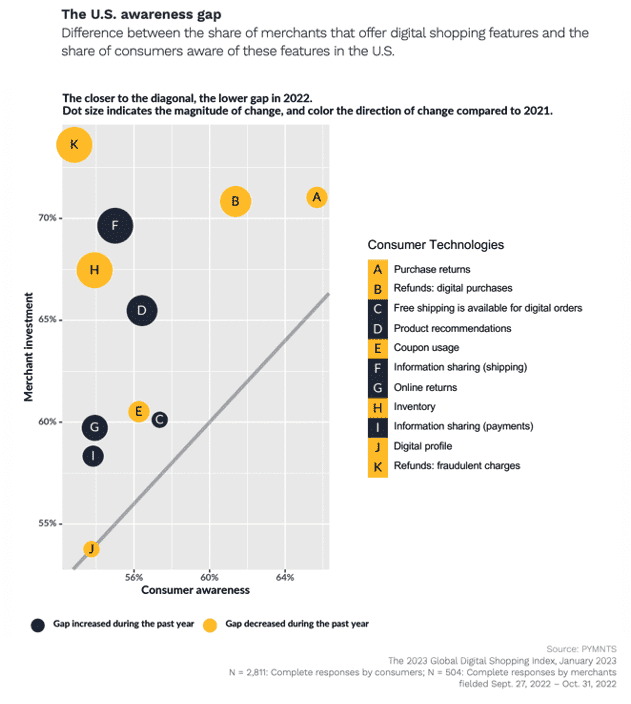
PYMNTS research shows that many shoppers just don’t know how good they have it.
This, as findings in “The 2023 Global Digital Shopping Index,” PYMNTS’ leading annual study of consumers and merchants across six countries that examines the frictions consumers experience when shopping and paying for grocery and retail products, revealed that many shoppers remain unaware of several shopping and payment features some of their favorite merchants provide.
Using smartphones, apps and digital features gives consumers greater confidence and certainty about their purchases, especially when they shop in a physical store, and nearly nine in 10 consumers (87%) use digital features to shop and pay for purchases across channels.
But there exists a critical awareness gap for many modern features merchants provide, including some of the most popular like free shipping, product recommendations, online returns, and refunds around fraudulent or digital purchases.

The data showed that shopper satisfaction increases when merchants add and make consumers aware of features they consider valuable to their shopping experiences, and shopper satisfaction decreases accordingly when merchants remove or change features they consider valuable.
The presence or absence of specific digital shopping and payment features is how consumers decide which merchant gets their business, and payment choice remains the most important shopping feature for all consumers in all markets across the 34 different merchant capabilities studied.
With digital wallets gaining ground every day, socializing awareness of merchant payment options is critical to driving customer satisfaction as well as long-term business growth.
Even for historically cash-based consumers in nations like Mexico, digital wallet use is up 27%, while cash is down 23% year over year.
In order to move the needle, businesses need to provide value for their customers that reduces common frictions and improves the discovery and purchase journeys.
Any type of capability awareness gap has a measurable impact on customer satisfaction. For example, findings revealed that shoppers in the U.S. are 28% less likely to realize that merchants offer guarantee or refund policies than U.S. merchants are to offer them. That awareness gap was largely responsible for the decline in overall consumer satisfaction in 2022.